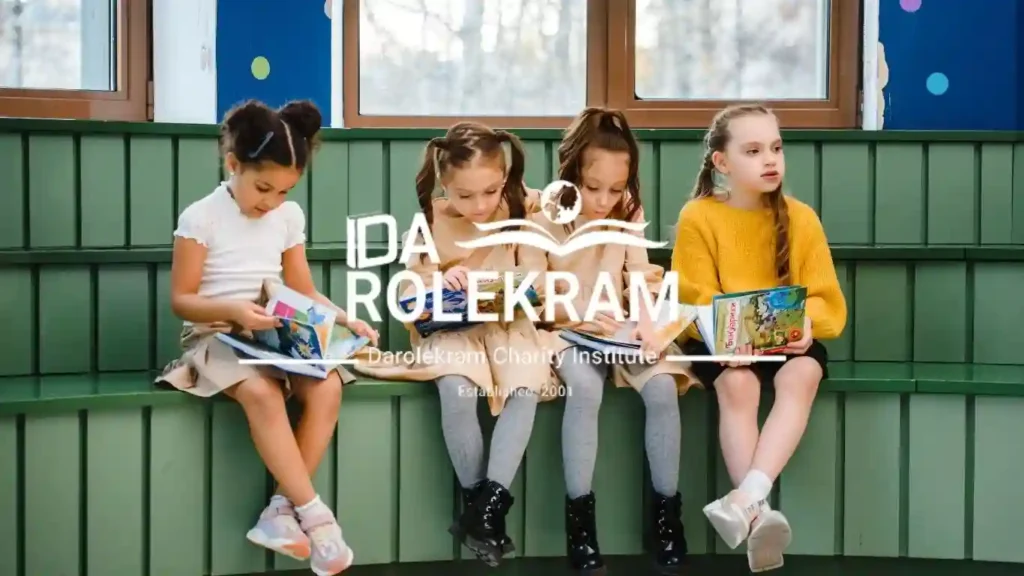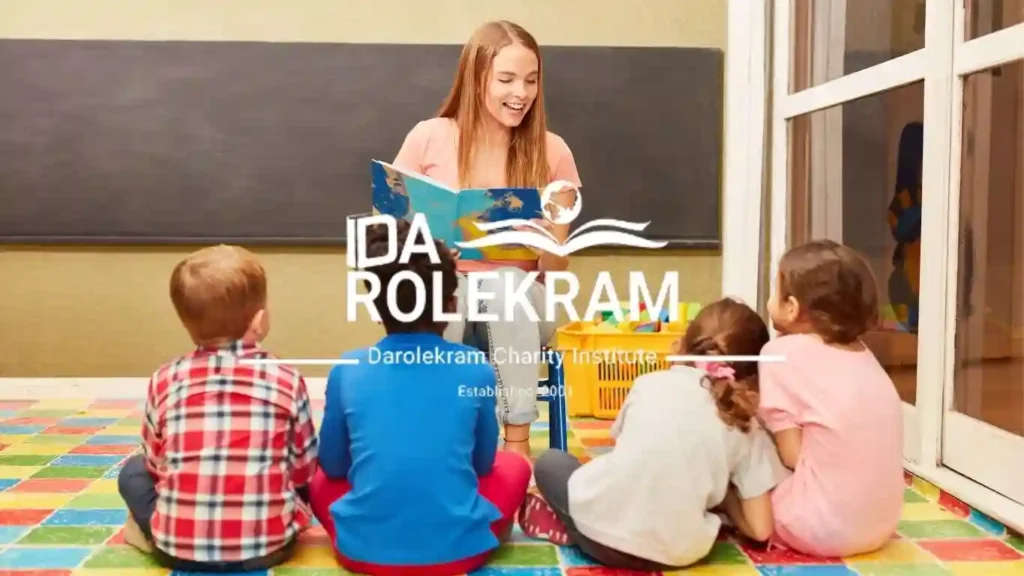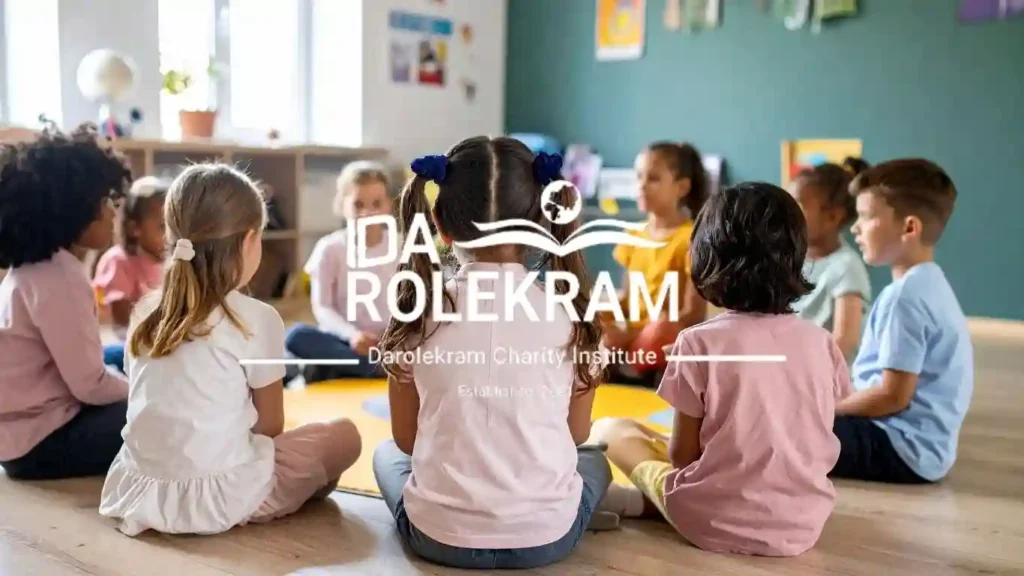In Iran, there’s a real mix of chances and problems in education which call for new tech to fix them. Websites and online learning are changing how Iranian kids, especially those who don’t have much, can get a good education. Tech is key to opening up education to everyone, but Iranian children face some special challenges that need smart answers. Groups like the Darolekram Foundation show how complete support can lower the barriers to learning
For 20 years, Darolekram Foundation has been a non-religious, non-political group that has spread to 23 locations nationwide. So far, over 11,000 students have gotten scholarships, and 8,000 are now getting help from them. That organizations that focus on fixing unequal education with respect and openness can really make a difference. Darolekram Foundation that educational performance is just a piece of the puzzle. They know there are five total dimensions that they focus on when helping students academically. They feel that if each student is comfortable, has value through learning, is safe and happy & healthy, that this feeling is reflected through learning.
This paper looks at how digital tools are changing education, especially for kids facing tough economic situations, and tries to find ways to keep kids involved in learning no matter what their background is. It will cover how tech is making education more open, the problems Iranian students face with getting and finishing school, and how organizations can make a difference by being fair in how they teach.
What Is the Help Iran Children Education Website?
The Help Iran Children Education Website is an online platform dedicated to improving access to education for vulnerable children across Iran. This website serves as a central hub, connecting donors, volunteers, and supporters with trustworthy organizations and campaigns focused on empowering children through learning. It offers clear information about ongoing educational projects, donation opportunities, and ways to get directly involved. Notably, the website partners with reputable charities such as Darolekram Charity and highlights international support options through Child Foundation, allowing both local and global communities to join the movement for educational equity in Iran.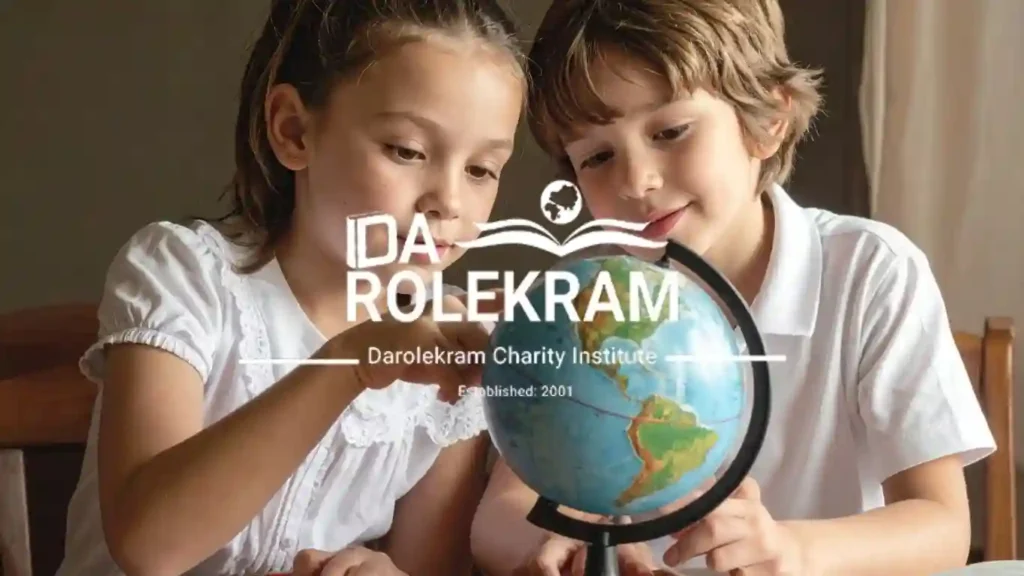
Who Benefits from This Website?
The primary beneficiaries of the Help Iran Children Education Website are children in Iran who face financial, social, or geographic barriers to education. These include children from low-income families, orphans, and those living in underserved or rural areas. Their families also benefit from the support and resources offered. Additionally, donors, volunteers, and international supporters benefit by gaining a reliable and transparent pathway to make a real difference. The website also empowers organizations like Darolekram Charity and enables supporters to contribute through trusted partners such as Child Foundation, making cross-border assistance easier than ever.
How Does the Website Support Children’s Education in Iran?
This website supports children’s education by raising awareness about critical needs, showcasing active projects, and connecting potential donors or volunteers to credible charities. Through features like easy online donation portals, up-to-date news, and impact stories, the platform streamlines the process of giving and getting involved. Importantly, it provides step-by-step guidance on how to support children—whether through direct donation, child sponsorship, or volunteering. The website also facilitates international contributions by working closely with Child Foundation, ensuring that help from abroad reaches Iranian children safely and efficiently.
Key Features and Resources Available on the Website
Key features of the Help Iran Children Education Website include:
- Detailed information about current educational campaigns and initiatives
- Secure online donation options with transparent reporting
- Volunteer opportunities for both local and international supporters
- Stories of impact and testimonials from supported children and families
- Educational resources for students and parents
- Guidance on sponsoring a child in Iran
- Clear instructions on how to support through organizations like Darolekram Charity and via Child Foundation for international donors
These resources make it easy for anyone, anywhere, to make a meaningful impact.
How Can You Get Involved Through the Website?
Getting involved is simple and flexible. You can donate funds directly to support school supplies, tuition, or educational programs. The website provides information on how to sponsor a child for long-term impact. If you prefer hands-on involvement, you can sign up to volunteer—either locally or remotely—helping with tutoring, translation, digital campaigns, and more. International supporters are especially encouraged to contribute via Child Foundation, a trusted partner that channels help securely to Iranian charities like Darolekram. The website also offers options to share campaigns on social media and raise awareness in your community.
Success Stories Highlighted by the Website
The Help Iran Children Education Website regularly shares inspiring stories from children and families whose lives have been transformed by educational support. These success stories demonstrate the real impact of donations and sponsorships—showcasing children who have returned to school, excelled academically, or overcome significant hardships thanks to the generosity of supporters. Many of these stories involve collaborations with Darolekram Charity and highlight international involvement through Child Foundation, proving that collective action truly makes a difference. Reading these stories can inspire new donors and volunteers to join and contribute to even greater change.
How to Donate or Volunteer via the Website
To donate or volunteer, simply visit the Help Iran Children Education Website and navigate to the donation or volunteer section. Here, you’ll find clear instructions to make a secure online donation, sign up for sponsorship, or apply as a volunteer. For international donors, the site explains how to contribute through Child Foundation, ensuring your support reaches Iranian children safely. All financial contributions are processed transparently, and volunteers can choose from a variety of roles based on their skills and availability. The platform makes it easy to start making a difference with just a few clicks.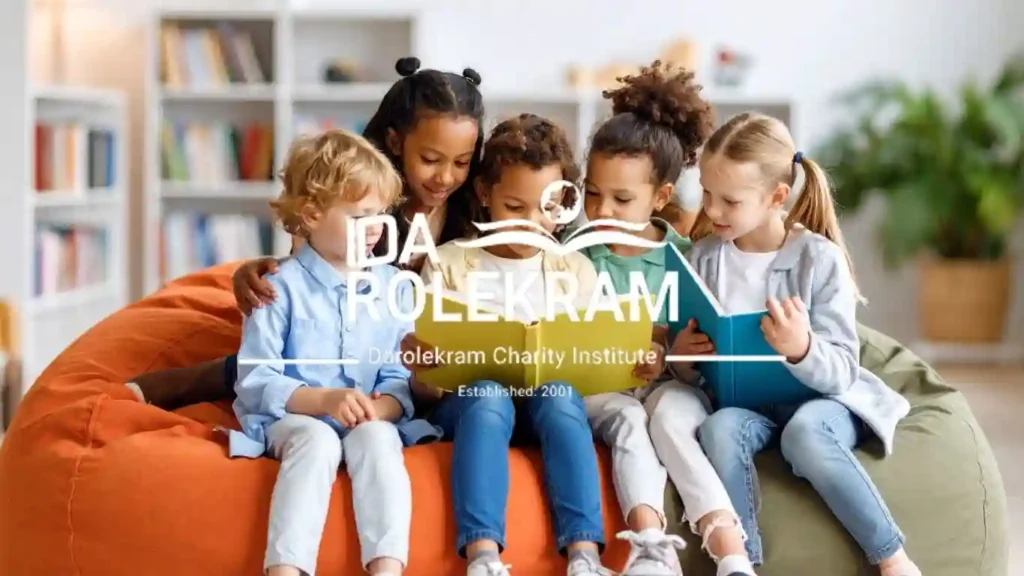
Is It Safe and Transparent to Support Through This Website?
Yes, the Help Iran Children Education Website is committed to safety, transparency, and accountability. It only partners with reputable charities like Darolekram and international organizations such as Child Foundation. Donors receive official receipts, regular updates, and impact reports detailing how funds are used. The website implements secure payment methods and rigorous privacy policies to protect your information. Success stories and testimonials provide additional transparency, ensuring you can trust your contribution is making a real and positive impact.
How Digital Tools Changed Iranian Education
Switching to online platforms was huge for Iranian education – maybe one of the biggest changes ever. It’s helping to break down those old barriers to good education. All over the country, there are sites and online stuff popping up to help kids, which is slowly getting rid of the old limits that used to decide who got to learn based on where they lived or how much money they had. Some provide online learning, mentorship, mental health help, and career advice, all rolled into one.
The rise of educational sites, such as ‘Shelbes,’ makes customized learning like nothing we have seen before. These sites use new tech to watch how students learn, spot where they’re struggling, and jump in to help, so everyone gets the best results. Their tech looks at learning in different ways, mixing videos, interactive activities, data on how people learn, and instant feedback to get students involved and excited. That’s a big step forward from boring lessons that don’t grab anyone’s attention because learning is static. Instead, this lets students take control and find meaning.
Tech and Getting Online
Good tech is super important if you want an online learning system to do well. It makes sure folks can always get to it on different gadgets and even with spotty internet . Iranian learning sites have some of the same problems getting people online as the U.S. does. It can be tough to get reliable internet, especially if you’re in the countryside or don’t have much money. People are coming up with cool solutions, though. Some have offline apps that update when you get internet, and others have designs that work even on simple phones.
When building a site, it’s key to make it easy to use. Students and parents have different tech skills, so you want clear menus, visuals that make sense, and support for different languages. Plus, if a learning site adds tools for students with special needs, that shows they really want everyone to be able to learn. That’s what sets the best sites apart.
Good Content & Keeping it Real
Websites that teach Iranian kids need to mix global teaching ideas with what’s taught locally and what’s important to their culture. The websites that do well get teachers, pros, and child development people involved. They make learning fun and hit teaching goals by using examples and situations kids know from their own lives. When students see how what they’re learning online fits in their world, it helps them and makes learning better, not confusing.
To teach well online, you need to make sure things are done right. Getting feedback from lots of folks is key. So, besides checking content regularly, getting opinions from others, and listening to teachers and students, you should use tools that check how students do. This helps everyone see how well they’re learning.
1. Fixing Unequal Education with Online Tools
One of the biggest education problems in Iran is that not everyone gets the same chance to learn. Where you live (city or country), how much money your family has, and what part of the country you’re in can all make a difference. Online learning platforms are a great way to level the playing field. They can give everyone a good education, no matter where they are or how much money they have.
Basically, tech can make education fairer because it gives students who wouldn’t normally get a good education a chance to learn.
For example, the Darolekram Foundation is all about making education equal. They help students from tough backgrounds by giving them scholarships and school support. They’ve been doing this for over 20 years, helping about 11,000 students (8,000 right now) in more than 20 locations. They know that helping students means more than just giving them money. They look at all parts of a student’s life – their mental health, social life, health, and culture – to help them grow.
Socioeconomic Roadblocks and Tech Fixes
Economic barriers are the main obstacle preventing many children in Iran from receiving a quality education. Educational websites help to alleviate a barrier by offering high-quality education for no or minimal cost, which would otherwise be a cost burden to students and families. For example, these types of websites offer unique opportunities to students far removed from potential educational resources as they allow for digital access to education without additional costs inherent in traditional education (e.g., transportation, materials, extra tutoring, etc.). This type of accessibility, which ensures equitable access to quality education, can be particularly advantageous for families residing in rural areas or communities lacking educational resources. Educational websites enable families to access a range of educational resources from home, which diminishes the geographic barriers that make participation in better quality education unattainable.
Geographic Inequities and Connectivity Opportunities
Iran’s large area, ethnolinguistic diversity, and landscapes of elevation and remoteness challenge educational equity, as rural and remote communities cannot access the same educational resources available in urban centers. Educational websites play a critical role in connecting students with educational resources and quality instruction from students’ homes to daily life. Accessing and linking quality instruction to local learners is continuing to expand with the aid of innovative connectivity efforts such as satellite internet initiatives and advancements to mobile networks.
The sophisticatedness of creating the region or local area content for students to navigate the local challenges and needs while coordinating to national curriculum reflects educational inclusivity to the geographical disadvantage. Educational sites increasingly are providing care options that include local examples relevant to students and the local culture, making connections clear between their education and their own communities and potential careers.
2. All-Encompassing Support Systems Beyond Conventional Learning
Contemporary educational websites for Iranian children function as all-encompassing support systems dedicated to alleviating the challenges imposed by diverse factors on students and their families. Many of these sites are aware that education success is contingent not only on instruction but also on psychological well-being, social support, family support, professional support, and career guidance. When these components are combined, they help form well-rounded educational ecosystems that support student growth and development in various ways.
The most effective educational websites provide mental health support because adherents value reflecting on the importance psychological well-being has on an individual’s education. Professional help through a mental health lens, stress management strategies, and student-controlled peer discussion groups allow students to address emotional distress from education, combined with development as social beings. For many Iranian children from different and disadvantaged backgrounds, these services are priceless as the alternative might be failure due to lack of access to mental health support both through a conventional system and an emotional state of well-being.
Getting Families Involved and Building Community
Educational websites are now really focusing on getting families involved. They’re adding stuff to get parents and guardians in on things. Parent portals let families see how their kids are doing in real-time, what assignments are coming up, and where to get help. Plus, there are resources for families to help them get what’s expected in class and how they can help their kids out.
Websites that focus on learning are also building communities that help support students beyond just their teachers. Things like online forums, study groups, and mentoring programs make it easier to learn together and help each other grow, both in school and as people. These communities can be a big help for students who feel alone or don’t have enough support where they live.
Career Advising and Future Planning
Forward-looking educational websites incorporate career advising and future planning capabilities which assist students in their understanding of the application of education and could help students in making sound decisions about their educational and professional futures. Career advising and future planning information may include career exploration tools, scholarship databases, university preparation programs, and connections to industry professionals that may offer some insight into particular career paths.
The application of future planning literature to entrepreneurship education and financial literacy programs prepares students to make both economic independence and creative problem-solving very effective aspects of their future careers. The literature provided in these areas can be especially useful in the Iranian context where the economic landscape has not only provided challenges, but challenges have also created opportunities for imaginative thinking and entrepreneurial pursuits.
3. The Darolekram Foundation: A Model for Educational Goodness
The Darolekram Foundation serves as an exemplary model of how organizations can use both traditional and digital methods to make a meaningful educational impact. The Darolekram Foundation began, and operates under the principles of human dignity and transparency. The Darolekram Foundation operates on a detailed charter, which describes itself and triangulates the work it does, thereby ensuring ethical, effective, and sustainable educational supports. This model shows how organizations can be accountable and use education as a holistic support addressing the many challenges facing disadvantaged students.
Darolekram’s focus on conserving students’ dignity through supports creates a model for other educational organizations can follow globally. The transparency offers guaranteed assurance for donors, students, and families about what resources have been utilized and the outcomes achieved. Transparency builds trust while promoting sustainability offering education support in a manner that promotes lasting impacts rather than temporary fixes.
The foundation embraces the five dimensions of education success- academic, psychological, social, health, and cultural. By providing scholarships in addition to mentoring, counseling, and enrichment activities, Darolekram provides students with the appropriate supports to achieve holistic success in life and education. The Darolekram model demonstrates the power and influence of helping students recognize their special talents and abilities, allowing them to reach their full potential rather than simply validating their minimum academic eligibility needs.
People (individuals or organizations) looking to promote educational equity and support the education of children in Iran may wish to engage with established organizations like Darolekram where there is a real opportunity to make meaningful and lasting change. Individuals and organizations are able to support education equity will have an opportunity to ensure that no child loses their education potential due to their economic situation, whether by donating money, providing volunteer hours, or offering some professional expertise.
4. Sustainability and Future Innovations
The sustainability of educational websites that deliver services to Iranian children is dependent on service models that provide ongoing funding for the long-term, continuous tech innovation, and programming that responds to student needs and changes in society. Successful models often develop funding streams that reduce reliance on individual sources of funding while keeping the services free for students who have limited economic means. Such models combined private philanthropic support with government partnerships and innovative fee-for-service plans that collectively provide for the ongoing funding of education wile still complying with goals for accessibility.
Innovation continues in the educational technology space and offers continued new opportunities for learning experiences and educational outcomes. Artificial Intelligence (AI) applications have created the opportunity for individualized and personalized learning paths that tailor to the needs of students and their learning styles. Virtual and augmented reality are technology that similarly creates learning experiences that are immersive and provide tangible and engaging experiences here abstract concepts may otherwise leave students disaffected. However, the integration of advanced technology needs to carefully consider implementation costs, access to users, and educational impact.
Partnerships and Collaborative Networks
As educational websites continue to thrive, they frequently depend on strategic partnerships with educational institutions, technology companies, government agencies and international organizations to add capacity and broaden reach and scale. Collaborating with partners allows organizations to share resources, share expertise, and to take a coordinated approach to educational issues that no one organization could address alone.
International partnerships can be especially valuable for educational platforms implemented for Iranian children, allowing access to global best practices, educational materials, and funding opportunities. While being mindful of local cultural values and educational needs, these partnerships maintain and contribute to international standards among Iranian educational initiatives.
Measuring Impact in Terms of Continuous Improvement
Educational websites that are effective in education establish comprehensive impact measurement systems that assess not just short-term academic outcomes but also indicators of long-term educational and life success. This means that educational websites will have robust measurement systems in place that can provide important data for continuous improvement of programs and the demonstration of impact to all stakeholders, donors, and especially policy makers involved with educational programs.
The use of an integrated student feedback mechanism guarantees that educational platforms remain flexible and responsive to students’ needs and preferences. Ongoing surveys, focus groups, and interaction metrics via analytics can provide unique insights that can guide platform development and educational content. This integrated messaging, based on student input, establishes an educational website with targeted relevancy to their desired populations.
Conclusion
Developing educational websites tailored to Iranian children represents a phenomenal shift in confronting educational injustice and broadening access to high-quality education. These websites underscore the capacity of modern education technology to dismantle barriers to education whilst offering students the value of high-quality learning opportunities, with considerable regard for their culture and identity. Organizations like the Darolaakram Foundation exemplify how a holistic, human-dignifying approach to educational support can consider the layered challenges experienced by students from disadvantaged communities.
Darolekram’s two decades of supporting over eleven thousand students in an ethical, transparent manner demonstrates how organizations can deliver a sustainable educational impact. A holistic model provided by Darolaakram that understood that student success meant providing academic, psychological, social, and cultural supports, demonstrated how organizations can build in pathways to long-term positive impacts on children’s lives. How Darolaakram’s approach acknowledged the importance of preserving the human dignity of students while also equipping students with the requisite resources and support to be successful, also illustrated ways how educational support does not have to undermine students’ self-worth.
The education of Iranian kids is becoming more and more reliant on new digital tools that mix tech with good design and ethical work habits. The educational websites that do well will focus on being easy to use, high-quality, long-lasting, and respectful of students, and they’ll keep up with what’s happening in the world. Teams of hard-working groups, kind donors, smart tech people, and dedicated teachers are building the base for education systems to make sure every child has a chance to succeed, no matter what.
If we want to keep improving these educational websites for Iranian kids, everyone involved needs to stay committed. Putting money into these platforms means putting money into Iran’s future, giving kids chances to learn and get the skills and self-assurance they need to give back to their towns and country. If we keep coming up with new ideas, working together, and caring about equal education, these platforms can keep changing lives and making things better for all Iranian kids, no matter who they are or where they come from.
The success stories coming out of organizations such as Darolekram show that barriers to education can be overcome with the right support, dedication, and resources. Darolekram’s model of, student support, transparency, and dignity, functions as hope and a realistic model for tackling educational inequality. With technology as a constantly-evolving medium and innovator, proven solutions technology adds will provide even more opportunities for Iranian children to further their educational aspirations and their nation’s bright future.
Frequently Asked Questions
Q: How can I use these educational websites when I live in an area with little or no internet connection?
A: Many Iranian educational websites now have an app for their services that allows you to work offline and sync your work when you can connect to the internet. There are even platforms that work on basic smartphones and utilize almost no data. Emerging satellite internet initiatives and improvements to mobile networks are also expanding connectivity in rural areas.
Q: Are these educational websites free, and what are the hidden costs?
A: Most legitimate educational websites directed to Iranian children are likely to be free or low-cost. You will need to included costs for internet access, devices you require, and potential premium features. Organizations like Darolekram offer completely free resources, while some platforms charge for advanced tutoring or certification programs.
Q: How do I determine the safety and reliability of an educational website for my child?
A: Look for websites that have a clear privacy policy, disclose their organizational information and track record. Trustworthy organizations like Darolekram, have published detailed charters, and have impact reports that they publish regularly. Sed away from those sites that ask for an excessive amount of personal information or immediate payment without being clear about what service you will receive.
Q:Will these websites completely replace a “regular school?
A: Educational websites are intended as a supplement to a “regular education.” Educational website work most effectively as a supplement to a school education, if it is inclusive of guidebooks, supplemental resources, tutoring, and parental support services. A program may announce the ability to support a student at home, a fully complete, but you will find Hidden costs and services built into the program, to enhance that experience. Even those platformers that claim to fully replace a traditional schooling system, will always focus to enhance learning and social engagement that takes place in a classroom environment – schools are providing far more than information or classes.
Q: What considerations should I have regarding the technical abilities of what I need to use the platform effectively?
A: Most platforms are simply designed to operate on basic mobile phones, tablets, or basic computers connected to the internet. A standard device with the ability to operate a web browser, video display, video output, and basic audio input/output capability, and reliably connecting to available bandwidth, should make almost every educational platform accessible. The majority of educational websites are designed to be efficient on limited bandwidth, and designed to work on legacy computing devices – all in an effort to allow all students the opportunity to learn and to have access.


